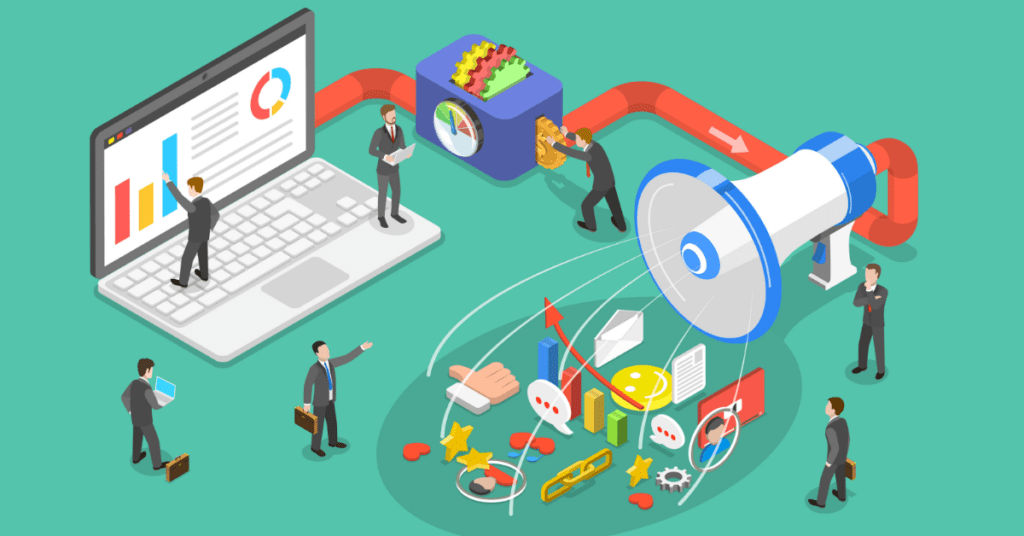Programmatic audio advertising holds strong potential for advertisers looking to target relevant audiences with tailored messaging.

Programmatic audio advertising can help you reach valuable and highly engaged audiences with ads they hear while streaming their favourite online audio content.
This method of advertising offers precise targeting and high efficiency to brands wanting to create powerful advertising campaigns. In addition, detailed analytics allow brands to assess metrics from each campaign and adapt future campaigns to improve engagement.
Advertisers are paying attention to the benefits of programmatic audio advertising and how it can create meaningful connections between brands and consumers.
Benefits of programmatic audio advertising
- Higher engagement with your audience
- Valuable audience size
- Real-time insights
- Refined targeting options
- Contextual advertising
- Efficient delivery of ads
- Reach audiences where they are
- Low risk of ad blocking
What is programmatic audio advertising?
Programmatic audio advertising helps brands gain traction with targeted ads delivered to engaged audiences. Let’s take a quick look at why programmatic advertising in general is so powerful and how using it with audio content creates a significant opportunity for advertisers.
The power of programmatic advertising
Programmatic advertising uses technology or software to manage ad delivery through automated systems that don’t rely on salespeople and manual ad insertion. The ads can be planned and scheduled, or programmed, offering extremely efficient delivery and valuable analytics.
Programmatic audio advertising
Programmatic audio advertising delivers your campaigns to audiences by inserting ads played during the delivery of digital audio content. Listeners could hear your ads before the content (called pre-rolls) in the middle of the content (mid-rolls) or at the end (post-rolls.)
The process is fully automated, making it a quick and easy way for advertisers to reach people listening to podcasts, streamed music or digital radio.
This method of advertising has become essential for companies and brands to boost engagement, improve targeting and adapt their campaigns based on accurate data.
How popular is digital audio?
Online audio listening is growing in popularity. Users can access audio content while they are busy with other activities. For example, they can stream music during their workday and then pull up a podcast for their commute home, adding up to many hours online.
EMarketer estimates that digital audio accounted for 11 per cent of total media time per day for adults in the United States last year and that it will grow to 11.7 per cent in 2021. Interestingly, it also notes that 2021 will be the first year digital audio surpasses traditional radio for time consumption by U.S. audiences.
It’s not just the time they’re spending that’s significant. It’s also the massive size of the audience. Sixty-two per cent of the U.S. population aged 12 and up, representing about 176 million people, is listening to audio online weekly.
Marketers are paying attention. Digital audio ad spending is forecasted to reach US$5.59 billion in 2021, up a notable 16 per cent from 2020.
What are the benefits of programmatic audio advertising?
While still a relatively new form of marketing compared to other digital channels, such as social media or paid search, programmatic audio ads show a lot of potential.
Let’s look at some of the benefits advertisers are finding when they give programmatic audio a try.
Higher engagement with your audience
Digital audiences tend to listen to audio content online while busy doing other activities like working out, driving, working or cooking dinner. They also often use headphones, reducing distractions. The lack of interruptions can create a setting that keeps them deeply engaged in the content and ads.
Many listeners have an emotional connection to their favourite content, especially if they regularly listen to the same podcast or online radio station. This bond can help advertisers nurture a bond between their brands and listeners.
Valuable audience size
Digital audiences are expanding every year, and this is an appealing factor for advertisers considering programmatic ads. Additionally, as more digital audio content is produced across multiple platforms, brands are seizing the opportunity to get noticed by these audiences.
Real-time insights
The ability to learn what works and what doesn’t is a big piece of the puzzle for any advertising campaign. Real-time insights allow advertisers to know which ads and campaigns resonate with their audiences and repeat successes. These analytics also help brands test new ideas and measure results in real-time.
Understanding audiences and using data to improve campaigns over time helps advertisers get the best return from their investment.
Refined targeting options
Advertisers testing programmatic audio can benefit by targeting audiences in the same ways they do on other platforms. It’s handy to target certain demographics and interests. But data from audio platforms can also allow you to target certain listening habits or devices used.
With refined targeting, you can create effective ad campaigns to reach relevant audiences with just the right messaging at just the right moment.
Contextual advertising
The power of contextual advertising cannot be understated. Programmatic audio advertising can deliver ads to audiences already primed to take in information on specific topics. For example, a company selling workout gear could deliver ads to audiences listening to running playlists. Likewise, a popular business podcast could advertise a new book on startups.
Relevant ads served to audiences already in a responsive mood can be very powerful.
Efficient delivery of ads
Introducing technology into any advertising method adds a remarkable level of efficiency. There are fewer delays in the process, making it easier and more cost-effective compared to traditional ways of buying advertising space. Ads are delivered seamlessly through digital programming once campaigns are set up, with data automatically feeding into analytics.
Reach audiences where they are
Consumers are busy and competition for their attention will always be a concern for advertisers. However, digital audio can reach audiences at almost any time, in virtually any location. The convenience of listening while working, commuting or working out allows brands to reach people where they are while letting them carry on with their regular activities.
Low risk of ad blocking
Listeners can’t block or skip audio ads easily. Platforms do not allow listeners to skip ads, and the landscape is new enough that people aren’t hungrily searching for ad-blocking tools. As a result, you’ll likely get more results for your campaign budget.
Where can I place programmatic audio ads?
As an advertiser, you can choose where you’d like to place your audio ads. This allows you to run ad campaigns to reach relevant audiences who are active on the platforms you choose.
Here are a few places you could consider placing audio ads:
- Podcasts
- Music-streaming platforms (such as Spotify or Pandora)
- Online radio
- Voice-enabled content (through voice assistants such as Google Assistant and Amazon Alexa)
New platforms that allow access to massive, engaged audiences are a valuable avenue for brands looking to win consumers’ attention. Digital audio is growing, and savvy advertisers are looking for ways to incorporate programmatic audio ads into their marketing strategy.
Book a consultation today to get expert insights into how programmatic audio could help you reach consumers in new ways.


